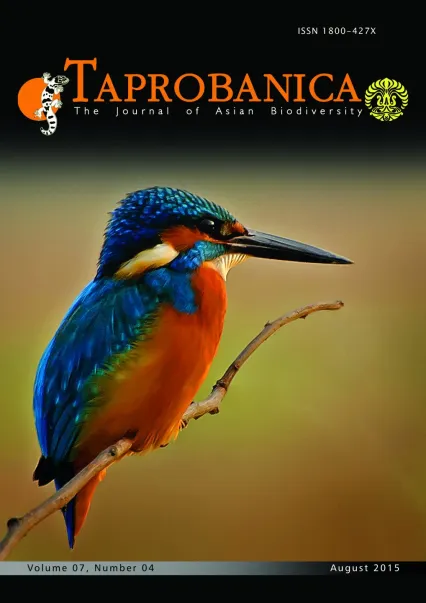

v7i4.197
Volume 7 | Number 4 | November 2015
Short Note
ISSN: 1800-427X (print)
eISSN: 1800-427X (online)
DOI:10.47605/tapro.v7i4.197
Submitted date: 26 July 2014
Accepted date: 25 November 2015
Published date: 15 August 2015
Pp. 246–249.
Microhabitat use and activity budget of four Himalayan river-birds, India
M.C. Krishna, K. Sarma & A. Kumar*
*Corresponding author. E-mail: tpileatus@gmail.com
A wide variety of river-birds are found in the Eastern Himalayan region of Northeast India, but the literature on microhabitat use and resource use patterns of these river-birds is very sparse. The fundamental processes that determine niche structures and influence niche segregation in coexisting species is a basic concern of community ecology. For example, when territories of different species overlap, those species utilize different local resources or the same resources differently due to either niche complementarity or resource partitioning. Understanding the role of microhabitat has been an unending quest of avian autecology and community ecology. Such studies, particularly when understood in terms of resource partitioning, have been successful largely because of the fundamental importance of microhabitat to bird ecology. In the present study, we looked at the microhabitat preferences of four species of birds namely plumbeous water-redstart (Rhyacornis fuliginosa), white-capped water-redstart (Chaimarrornis leucocephalus), brown dipper (Cinclus pallasii) and slaty-backed forktail (Enicurus schistaceus) in Kamlang Wildlife Sanctuary (KWS).
Section Editor: Varadharajan Gokula
eISSN: 1800-427X (online)
DOI:10.47605/tapro.v7i4.197
Submitted date: 26 July 2014
Accepted date: 25 November 2015
Published date: 15 August 2015
Pp. 246–249.
Microhabitat use and activity budget of four Himalayan river-birds, India
M.C. Krishna, K. Sarma & A. Kumar*
*Corresponding author. E-mail: tpileatus@gmail.com
A wide variety of river-birds are found in the Eastern Himalayan region of Northeast India, but the literature on microhabitat use and resource use patterns of these river-birds is very sparse. The fundamental processes that determine niche structures and influence niche segregation in coexisting species is a basic concern of community ecology. For example, when territories of different species overlap, those species utilize different local resources or the same resources differently due to either niche complementarity or resource partitioning. Understanding the role of microhabitat has been an unending quest of avian autecology and community ecology. Such studies, particularly when understood in terms of resource partitioning, have been successful largely because of the fundamental importance of microhabitat to bird ecology. In the present study, we looked at the microhabitat preferences of four species of birds namely plumbeous water-redstart (Rhyacornis fuliginosa), white-capped water-redstart (Chaimarrornis leucocephalus), brown dipper (Cinclus pallasii) and slaty-backed forktail (Enicurus schistaceus) in Kamlang Wildlife Sanctuary (KWS).
Section Editor: Varadharajan Gokula
- List of Articles & Contents





